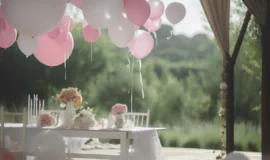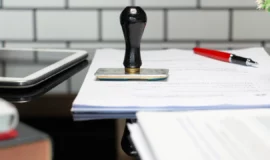
Did you know that there are over 30 million padel players all over the globe? There has been a boom in the popularity of this sport worldwide since the COVID pandemic, and it’s been trending in Pakistan as well. That’s the reason why many people want to start a padel business in Pakistan. If you are one of those and have what it takes to become a successful businessman, I have brought you a detailed guide and will share the experience of a padel club owner to help you establish a padel court business.
Before I take you on the journey to help you start a padel court in Pakistan, let’s see what padel tennis is and what padel courts are.
What is Padel?

A mix of squash and tennis—that’s how padel, also known as paddle tennis, is described. It’s a racket-based ball sport played in an enclosed space; however, the rackets are different compared to squash and tennis. They are mostly made of wood or carbon fiber with holes inside instead of wired mesh. The game is played with a net in the middle, like tennis, and the court also looks very similar.
Players must pass a ball over the net into an opponent’s side by hitting it with their racket. But in padel, the walls/fence of the enclosed court are firmly part of the sport’s gameplay. Players are allowed to hit a ball after it bounces off a wall/fence to keep the ball in play. This game is mostly played by four people in doubles, but it can be played individually as well.
Why Start a Padel Court Business?
When I asked my friend (the co-owner of the Padel Pro) why he started this business, his answer was simple: high demand, low competition. It’s true! With the growing popularity of padel tennis in Pakistan, demand is getting higher. But there are some other reasons to start a padel business. For me, one of the top reasons is the diversified revenue stream opportunities (will be discussed later in this blog). Other important reasons are the scalability and low maintenance costs compared to some other businesses.
Is It Still a Good Idea to Open a Padel Court?

Padel tennis started gaining popularity in 2024 in Pakistan, and currently, many padel courts have already opened in major cities. In Karachi alone, over 100 padel courts have already been established. So, is it still a good idea to open a pedal court? Well! It’s not just the number of courts rising, but the demand is also increasing with the new players discovering this game due to the trend.
In Ramadan, many people found it hard to get free slots in many courts as they were completely booked for some days. It shows the growing popularity of the sport even when many new courts are opening. In my opinion, the new courts are making it easier for the new players to explore the game. It’s the reason why my friend opened another padel court in 2025, as he still saw the potential.
Moreover, there are still many cities with high potential for this type of business, as we generally see the trend flow from big cities to small towns. Even in big cities, you may find a perfect untapped location but you need to research a lot on the feasibility in the specific area, considering the audience nearby, their average income, hobbies, etc.
Now, let’s see some things to consider when starting a padel court business in Pakistan:
Market Research and Demand

Starting a business is a big step that comes with a lot of risks and rewards. Just reading that there is still high demand, so let’s start the business isn’t an appropriate approach. You need to do proper market research and see the demand. It is important to understand the demand for this sport in the target location.
My friend already had a cricket court there, so it was easier for him to understand this and identify the target audience. Yes, selecting your target audience is another major thing you need to focus on. Choose who to target: casual players vs. professional athletes, budget customers looking for affordable courts vs. elites seeking high-end experiences.
He chose to target people seeking affordable courts, and guess what? His club is attracting many new players having their first experience on his court, learning the sport. As a result, many of them who have developed a passion for the sport have become his loyal customers. He shared that for many clients, his courts hold a special place as the site of their very first game.
Analysing the existing competition is also crucial because if there are already many competitors in a specific location and it’s already saturated, you will find it hard to become successful there. Instead, you may need to explore new locations with high potential and less competition.
Business Planning and Investment

After you have completed your research, you can build a solid business plan based on the market research and investment you want to make.
First of all, it is important to know the capital required to start a padel court. As per my friend and some other sources, it can vary significantly from Rs. 5M to 7M for a basic 2-court facility, to even up to Rs. 15M for an international standard court.
The major portion of this investment goes to the turf, glasswork, and steel structure, and as for my friend, it was ⅔ of the total cost. It’s because the padel court needs to have a high-standard turf. Compromising on it means compromising on the experience of players, which you won’t want. It can vary depending on which standard of facility you are building.
Other costs include land acquisition (rent, most probably, if you don’t already own land) and equipment like rackets, balls, and some other equipment to establish a facility. The costs of equipment can vary, as you might get an affordable padel racket for Rs. 5,000 or a high-standard carbon fiber racket for even Rs. 30,000.
So, in terms of investment, building a padel court is really expensive as it is not a small business you can start under Rs. 50,000. If you want to see ways to get investment for your business, this guide can help. If you think the investment is too high, see our blog on part-time business ideas in Pakistan.
Many of you will be thinking of profitability and ROI. It totally depends on your market research, business plan, capital invested, and marketing. The new entrants offering affordable rates with decent standard facilities and a solid marketing plan can be a profitable business. My friend’s business came to its break-even point within one year of starting (some might achieve it early, some may take more time). The key is investing the right amount and effort in the right areas.
For business planning, you need to have market analysis, marketing & sales strategy, operational plan, financial plan, etc.
Choosing the Right Location
If you want to choose the right location, here are some important factors to consider:
- Accessibility
- Visibility
- Population density
- Their average income & purchasing power
- Interest of the target audience
- Available space
- Ideal size and number of courts to start with
Obtain Necessary Permits (Legal and Regulatory Requirements)

Here comes the part that many new entrepreneurs in Pakistan fear the most: obtaining the necessary permits. It looks difficult if you want to do it yourself, but if you get the consultancy from lawyers, experts in company registration, it can become much easier.
Here are some important things you need to consider:
- Business & trademark registration and licensing
- Permits for land use and construction
- Business bank account
- Become a tax filer
- Safety regulations and insurance requirements (if any)
For more information regarding the legal requirements and permits, you need to talk to a corporate lawyer or a business law consultant.
Building the Padel Courts
If you have obtained all the permits and have a solid plan backed by the market research, now is the time to build the padel court.
First of all, learn about the padel court dimensions, as you need to build your court as per international standards.

Padel Court Dimensions
A padel court is smaller than a tennis court. Here are its dimensions:
| Length | 20 meters |
| Width | 10 meters |
| Unobstructed height above the playing | 6.0 meters (minimum) |
| Rebound ends | 4.0 meters (3 meters of solid wall made of toughened glass or other material that doesn’t affect the ball bounce & 1 meter of metal fence) |
| Net | 10 meters long, 0.88 meters high at the centers & 0.92 meters high at the ends (a maximum tolerance of 0.005 metres) |
After the dimensions, you need to focus on quality flooring, turf, fencing, and lighting, as most padel courts are open 24 hours a day. The glasswork is important as the ball needs to bounce back after hitting the rear glass walls. For this purpose, 10mm or 12mm tempered glass is mostly used all over the globe.
The steel structure is also very important, as you need a solid structure for durability so you won’t have to spend again and again on its maintenance. In this regard, get professional installation services.
When building this court, my friend encountered many problems. The service providers didn’t have the expertise to build the courts, as it was a new phenomenon for them. Even obtaining materials was difficult and costly at that time. Now, it shouldn’t be a big problem, as you can find some structure builders, especially in the major cities, who have experience in building these courts.
Equipment and Facilities

Now is the time to get the essential equipment and build additional facilities. Here is the list of some essential equipment:
- Padel Rackets
- Padel Balls
- Towels
- Padel Nets
- Padel Shoes
It’s not only about providing basic equipment; you also need to build facilities to enhance the customer experience:
- Parking
- Refreshments
- Lockers
- Changing Rooms
- Showers
Tip: You may partner with sports brands for sponsorship or equipment supply.
Marketing and Promotion

For a successful business, it is important to have a solid marketing strategy. My friend found social media marketing to be one of the best ways to get new clients. But for the retention, he said the community groups are the best. Let’s see some marketing and branding tips for this business.
- Create a brand identity and logo
- Leverage social media and digital marketing
- Offer promotions, free trials, and membership packages
- Partner with local influencers and sports organizations for more reach
Bonus tips:
- You may also get partnerships with banks to offer discounts
- Use your court to offer advertising space to the sponsors
- High occupancy is one of the key factors to high profitability, so try to keep your court booked
- Winter & Ramadan are the peak seasons, so plan cleverly for peak and off peak seasons
Hiring and Staffing
Every business needs people, and a padel court is no exception. You need staff for customer service, management, operations, coaching (optional), etc. For a basic 2-court facility, 3 to 5 people:
- Managing, Marketing & Customer Service: Manager
- Operational staff: ball boy/office boy/sweeper/Canteen boy
- Coaching staff: Trainer (optional)
The number will increase if you want more courts or want to open at multiple locations.
Expenses, Revenue Growth and Expansion Strategies

Expenses
It is important for you to estimate your daily and monthly expenses before starting the padel court business, as my friend told me about many expenses that I couldn’t imagine at that time. Here are some of the expenses you will have to bear in this business:
- Rent (if you have a rental property)
- Utility bills (electricity, gas, water, etc.)
- Salaries
- Generator’s fuel expenses (if you are not installing solar panels)
- Lights replacements
- Padel racket replacements
- Padel ball replacements
- Maintenance
Revenue & Growth
Well, renting the court on an hourly basis is the most common revenue stream of the padel courts. Some businesses are offering affordable rates from Rs. 3,000 to Rs. 4,000 per hour, while some top-class courts are charging from Rs. 5,000 to Rs. 8,000 hourly rate.
Padel Court Rates in Pakistan
| Padel Court Category | Hourly Rate | Hourly Rate Per Person (after dividing the cost) |
| Affordable | Rs. 3,000 to Rs. 4,000 | Rs. 750 to Rs. 1,000 |
| High Class | Rs. 5,000 to Rs. 8,000 | Rs. 1,250 to Rs. 2,000 |
Renting is not the only way to generate revenue. If you want growth, you need to focus on other income streams. Here are some of the ways to generate more revenue:
Sell items: Backpacks, padel rackets, padel shoes, sportswear, etc.
Host Open Tournaments: Set an entry price and announce the winning amount (after taking your share)
Get Corporate Clients: Host corporate tournaments
Offer Coaching Services: Hire trainers & get a fee from the clients who need training
Offer refreshments: Drinks, snacks, dining, etc.
Add More Courts: If your existing courts are profitable, you may add more courts or open more branches at other strategic locations
Challenges and How to Overcome Them

The padel business has many unique challenges you should be aware of. When my friend opened his court, he encountered the following problems:
Difficulty in Finding Quality Turf
Football and cricket turfs are not as good as required in padel tennis for a better rebound. A high-quality 12mm polyethylene monofilament with a dense stitching rate artificial turf is recommended for padel. So, he searched and visited numerous vendors, even the ones that directly import from China, to get the appropriate quality at a competitive price.
Constructing the Structure
One of the major challenges he encountered was constructing the structure for the padel court, as the laborers didn’t know how to build it. So, he did self-research & supervised every step in the construction. The tempered glass was too sensitive to install and could break if mishandled by the labor.
Weather Challenges
He operates an outdoor court, so the weather can become challenging. The court must have an excellent drainage system; turf needs to be covered with a waterproof sheet immediately when it starts raining. So, if you want to open an outdoor court, be prepared for every type of weather.
Here are some other challenges the padel businesses might encounter:
- Seasonal fluctuations and low footfall periods
- Unexpected maintenance and operational costs
- Competitor offering discounts & offers
- Market saturation
- Booking management during peak season
Final Advice from A Padel Court Owner
Here is some advice for beginners from a co-owner of two padel courts:
- Civic work should be strong
- The court should be properly levelled
- International standard turf is essential (needs to be replaced periodically)
- Drainage should be excellent
- Provide quality rackets and balls
- Customer service should be exceptional
If you are afraid of failure, read our guide on common factors leading to the failure of new businesses.
To Wrap It Up
Opening a padel court is still a good idea in 2025. The competition has increased for sure, but the demand is also increasing with the entry of new players exploring the sport. Smaller and medium-sized cities may also have great potential, as they often follow trends from large cities.
However, to start the padel business in Pakistan, you need to plan strategically by doing market research and selecting your target audience, identifying the best location as per your target customers, and analysing if this business is suitable for you.
I have provided a detailed guide to start a padel court in Pakistan. This guide also has the real insights, tips, and challenges faced by my friend who jointly owns two padel courts. If you want to know anything that’s not mentioned here, ask me in the comment section below.








Leave a Reply